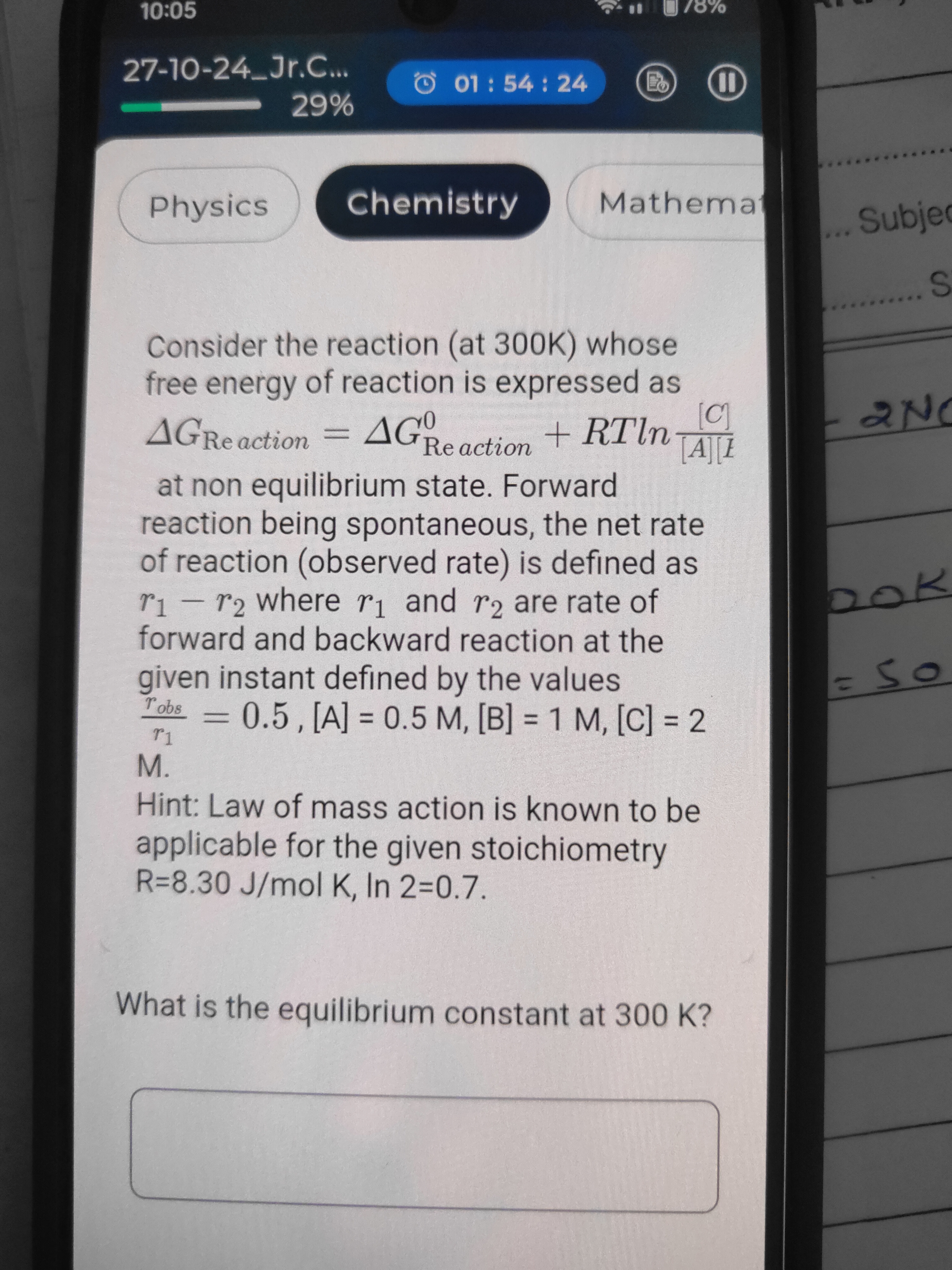What is the equilibrium constant at 300 K?

Understand the Problem
The question is asking for the calculation of the equilibrium constant for a chemical reaction at a specific temperature, based on the provided reaction conditions and parameters. It involves principles of thermodynamics and the law of mass action.
Answer
The equilibrium constant at 300 K is $K = 4$.
Answer for screen readers
The equilibrium constant at 300 K is $K = 4$.
Steps to Solve
-
Identify Given Values We have the following given values:
- Temperature, $T = 300 \text{ K}$
- $R = 8.30 , \text{J/mol K}$
- Concentrations: $[A] = 0.5 \text{ M}$, $[B] = 1 \text{ M}$, $[C] = 2 \text{ M}$
- Observed rate ratio: $T_{obs} = 0.5$
-
Determine the Free Energy Change ($\Delta G_{reaction}$) The expression for the free energy change of the reaction at non-equilibrium is given as: $$ \Delta G_{reaction} = \Delta G^{\circ}_{reaction} + RT \ln \left( \frac{[C]}{[A][I]} \right) $$ Since $[I]$ is not provided, we will denote it as $[I]$ for now.
-
Apply the Law of Mass Action The law of mass action relates the equilibrium constant ($K$) to concentrations: $$ K = \frac{[C]}{[A][B]} $$ At equilibrium, the forward and backward rates are equal, hence: $$ r_1 = K \cdot r_2 $$
-
Express the Rates in terms of $K$ We can rearrange the expression for the observed net rate: $$ r_1 - r_2 = 0.5 \times r_1 $$ This leads to: $$ r_2 = \frac{r_1}{2} $$ Therefore, substituting in for one rate, we get: $$ r_1 = K \cdot \frac{r_1}{2} $$ Rearranging gives: $$ K = 2 $$
-
Determine the Equilibrium Constant Now we will finalize the value for the equilibrium constant using the concentration values. Putting it together gives: $$ K = \frac{[C]}{[A][B]} = \frac{2 , \text{M}}{0.5 , \text{M} \times 1 , \text{M}} = \frac{2}{0.5} = 4 $$
The equilibrium constant at 300 K is $K = 4$.
More Information
The equilibrium constant provides insight into the ratio of products to reactants at equilibrium. A value greater than 1 indicates a tendency for the reaction to favor products.
Tips
- Forgetting the value of [I]: If the concentration of [I] is not provided or assumed incorrectly, it can lead to errors in the calculation.
- Misapplying the law of mass action: Ensure correct stoichiometry when applying concentrations in the law of mass action.
AI-generated content may contain errors. Please verify critical information